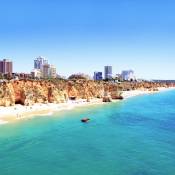Best Things to Do in Palmela
Showing 1 - 9 of 9

Castelo de Palmela Roman Danylych | BY-SAPalmela Castle stands at an altitude of 1,200 metres and provides panoramic views of the Serra da Arrabida, the vineyards below and the Tagus and Sado Rivers. In good weather it is even possible to see Lisbon around 40km to the north.
It is thought that the Romans had a settlement here and then the Moors who later occupied this region built a fortress here around the 8th century. By the 12th century the Islamic forces had been driven out and from then until 15th century the castle served as an important Portuguese military stronghold. It was later...

Monastery of Jesus - Setúbal Georges Jansoone | BY-SASetubal's Monastery of Jesus was built in the 1490s as a convent for Poor Clare nuns, a Franciscan order. The building represents some important moments in Portuguese architecture being one of the earliest examples of the Manueline School of Architecture.
The outside of the Arrabida Stone church has no spire and features a rectangular nave leading to the polygonal apse at one end and a bell tower at the other. Inside of the church the nave is unusually narrow and features attractive twisted columns carved from pale...

Casa do Corpo Santo Viet-hoian1 | BY-SAThe Casa do Corpo Santo (House of the Holy Body) is also known as the Museum of the Baroque. Situated close to one of the remaining sections of city wall that have protected Setúbal from attack for centuries, its own exterior perimeter wall and simple marble name plate give little away about what you might find inside.
This includes several relics from when the Casa do Corpo Santo was first built in the early 1700s, alongside beautiful blue and white tiling decoration added roughly 150 years later which lines many of the rooms from the floors to chest height.
The selection of...
4. Casa da Baía

Casa da Baía Patrick Nouhailler | BY-SAWith its dark blue plasterwork and contrasting pale stonework windows, it's not hard to spot Setúbal's Casa da Baía, or House of the Bay. Only a short walk from the town's main square, the Praça de Bocage, it was built in the aftermath of the devastating Lisbon earthquake of 1755 as a home for orphans and widows. Many were buried in the cloister grounds after their deaths.
The ambience that surrounds the Casa da Baía is a much happier one today. The building serves as an exhibition space for people to learn about the natural environment (with information in both Portuguese and...
A short wander north from the harbour, Setúbal's Museum of Archaeology and Ethnography (Museu de Arqueologia e Etnografia) is located on the busy Avenida Luisa Todi thoroughfare.
The museums archaeological displays are focussed around the Roman origins of the city 1500 years ago. Its impressive ethnographic collection instead helps to unravel the local customs and culture of the region, from farming to spinning and other handicrafts.
The museum is open Tuesday to Saturday (with a gap for lunch around midday). Admission is free.
Foodies with adore Setúbal's indoor Mercado do Livramento. It's an incredible place to head to sample those typical Portuguese flavours from bacalhau (salt-dried cod) to pasteis de nata (custard tarts). The array of fresh produce on sale here is simply mesmerising, with around 300 independent vendors all housed under the one roof. The fact that the market remains an integral part of Setúbal life and culture makes the market all the more impressive to behold.
Wander this vast warehouse-like space to soak up the atmosphere, or make your way among the stalls to pick and choose the very...

Fortaleza de São Filipe Filipe Rocha | BY-SAThe Fortaleza de São Filipe (Fort of St Philip) dominates the skyline above Setubal. It can be reached from the town below by an exhilarating 30-minute hike or by road.
Today the fort is home to an upmarket 16-room Pousada hotel, but because this means the building is open to the public, casual visitors are free to explore the ramparts, grounds and battlements to take in the panoramic views of Setubal, the shimmering Atlantic and the Troia Peninsula. Why not book an evening meal in the hotel's restaurant...

Quinta da Bacalhôa Theo França | BY-SAThe gardens at Quinta da Bacalhôa in Setúbal were first laid out in the sixteenth-century during the Renaissance period. Fully-restored to their former glory in the 1930s, today the gardens continue to demonstrate the fashionable styles of the period. These are typified by neat knot-gardens of box wood and shaped topiary bushes rather than the free-form naturalistic design that became common in later centuries.
Evoking the grand gardens of Italy in form, it is also dotted with stone fountains, statues and pavilions that draw the eye. The gardens are open from 10am – 5pm, Monday to...

Troia Roman Ruins RitaBatalha94 | BY-SAThe Roman Ruins of Troia (Troia Ruinas Romanas), span 500 years of history starting back at the beginning of the first millennium. The lives of the ancient Roman occupants of the city during this time can be explored and understood through what they left behind – cemeteries, heated bathhouses, and even stone tanks for pickling and otherwise preserving fish for shipment right around the empire.
Located opposite Setúbal on the north-western side of the Troia Peninsula, the complex includes almost 200 different fish-processing tanks, demonstrating the vast scales that were being used...
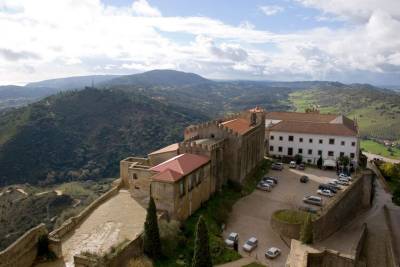
Palmela travel guide »
Another link in the ancient Portuguese defence system, Palmela is a charming small town centred around a fortified castle at an altitude of 1200 metres at the edge of the Arrábida...
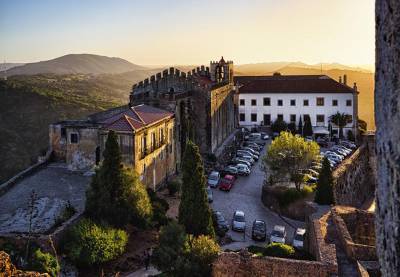






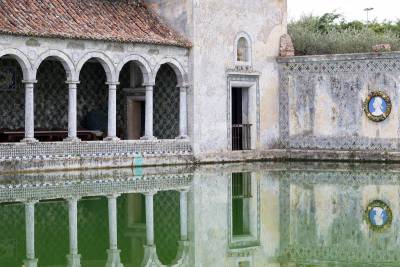

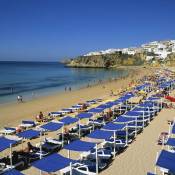 Albufeira
Albufeira
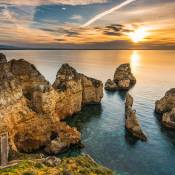

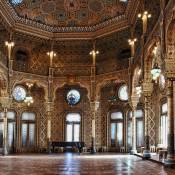


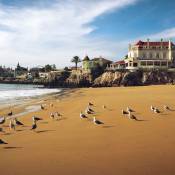 Cascais
Cascais

